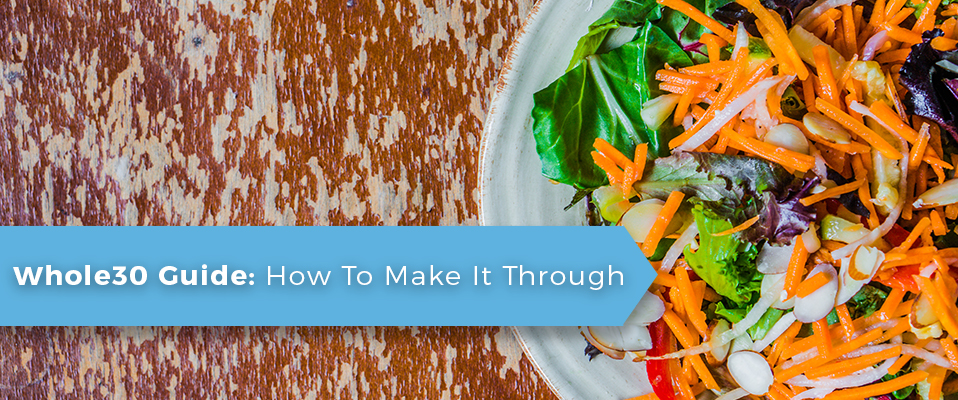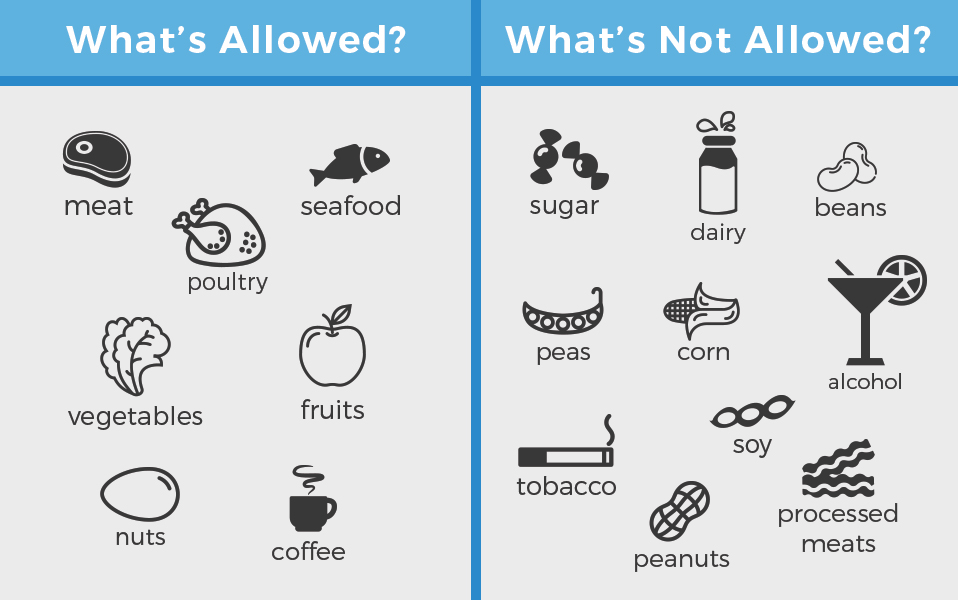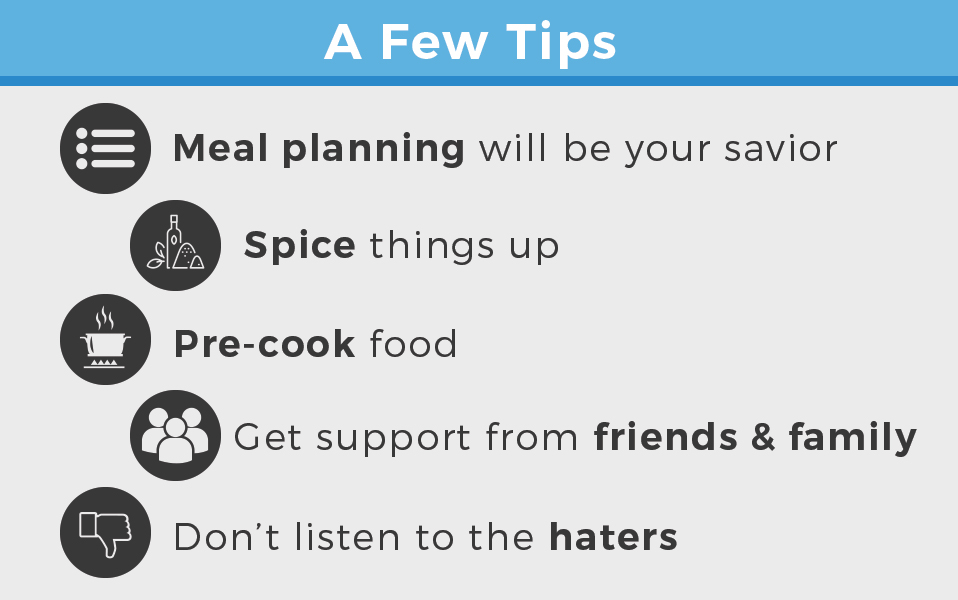Popping up on all kinds of blogs — from mommy to foodie — Whole30 has been blowing up the internet since 2009. In case you’ve been living under a rock for the better part of the past decade, the Whole30 is essentially the Paleo-diet on steroids, and functions as a month long reset for your diet. Aimed at reshaping your habits, eliminating cravings for everything from cakes to cookies or maybe even a weakness to plain old glutinous, refined white bread, Whole30 is less about shedding pounds, and more about shedding food issues.
Whole30 has a lot of rules. Like paleo, there’s an emphasis on high protein content and very little in the way of carbs. The good news is, unlike other diets, you don’t have to count calories. Fill up on meat, fish, eggs, fruits and veggies, healthy fats — even load up on potatoes if your heart desires. You can’t eat dairy, but there are a couple exceptions. Ghee and clarified butter are Whole30 compliant, as they contain no lactose.
The idea is, some types of food, particularly sugar, grains of all stripes and even beans (more on that later) could be affecting your body in more ways than you even thought possible. Think unexplained aches and pains, adult acne and digestive issues.
There Are SO MANY Rules — Why Would Anyone Do This?
Good point. Some of us are rules-averse. Nevertheless, maybe you’ve just realized you’re allergic to some mystery ingredient, dairy just isn’t doing it for you any more or you’ve realized that it might be time to lose a few pounds, be it baby weight or a just a few too many cookies. Maybe you have chronic pain or an autoimmune disease. Perhaps your medication isn’t doing its job, or you’d like to get started on the path to a more natural lifestyle. Maybe you’re hungry for a challenge. Whatever the reason, you’ll find that Whole30 will not only transform your entire diet, but likely the way you think about food as a whole. Expect changes to your food preferences, your cravings, as well as how sensitive you become to sweetness and other sensations.
Of course, top shelf ingredients like grass-fed beef, cage-free eggs and farm-direct organic fruits and veggies are the recommended choices for doing the program. However, if you want to do Whole30, and just can’t justify the cost, we say, there’s no reason to break the bank over this stuff. Buy what’s within your budget. You know what else isn’t good for the body and mind. Stress. Buy what you can afford. Maybe go frozen for certain fruits and veggies. Companies freeze them during the peak of their season, so the freezer section can offer some real bang for your buck. Also, handpick which ingredients are most important to you. For reference, take a look at these Clean 15 and Dirty Dozen guides, which offer a good outline as to what’s worth paying organic prices for and what to not worry about.
The Whole30 program seems to be defined by its stringent commitment to rules, order (artists and anti-establishment folks, you have a rough road ahead) and its hardline stance on cheating. This oft-quoted line from Whole30 sums up the sentiment: “It is not hard. Don’t you dare tell us this is hard? Quitting smoking is hard. Beating cancer is hard. Drinking your coffee black. Is. Not. Hard. You won’t get any coddling, and you won’t get any sympathy for your ‘struggles.’” If you fall off the wagon. Get back on. You’re starting from the top, at Day 1 — no exceptions.
The stringent approach to cheating is for your own good. Again, the point of the diet is to break bad habits and eat the way we were meant to, before the microwave era came along and coated everything in mayonnaise, cream of mushroom soup and wildly orange “cheese product.”
The Whole 30’s ‘tough love’ approach may scare some people away, but we’ve laid out a quick and helpful Whole30 guide to get you going and hopefully make things a bit easier. Hey — maybe you’ll find you even want to stick around for a full ‘Whole60’, ‘90’ or beyond!
So What Can You Eat?
So like we’ve mentioned, there are are some rules. Lots of them. Nevertheless, you can eat many great foods on Whole30. You’ll marvel at the fact that you are only eating real food — though some of what you consider “real food” is prohibited, like peanut butter and lentils. The biggest being the beans, grains and sugars. Also, there’s no alcohol, no dairy and again, absolutely no cheating. One thing to note, if you’re a chronic take-out abuser or someone who’s food primarily comes wrapped in a plastic sheath, you’ll have to adjust to a different routine. Here’s some pointers to get you excited about some
What’s Allowed?
- Meat (Steak, Ground Beef)
- Poultry (Turkey, Chicken)
- Seafood (Shrimp, Salmon, Tuna, Canned Fish)
- Vegetables (Nearly all veggies are ok)
- Fruit (All fruit is in the clear)
- Nuts (Almonds, Cashews, etc.)
- Coffee(!) (No milk)
What’s Not Allowed?
- Sugar
- Dairy (Except those aforementioned lactose-free options)
- Beans — black, refried, pinto, even lima beans
- Peas (both of the green and chick variety)
- Corn
- Soy
- Alcohol (not surprising)
- Tobacco (duh)
- Peanuts (Not a real nut! Who knew?!)
- Processed meats — breakfast sausage, bacon, ham that comes in a bag (come on, you saw this one coming)
How Can I Make Things Easier?
Between the rising cost of groceries and the fact that you’ll need to make everything from scratch (seriously EVERYTHING has sugar in it), you might be feeling a little overwhelmed by the sheer prospect of the Whole30 — which seems to be uniquely designed for the masochistic CrossFit set. But there are things you can do to ease the pain. Here’s a few tips to slice and dice your way to Whole30 heaven:
- Meal planning will be your savior — Keep that shopping list on hand and build different combos. But, in the spirit of planning don’t make a bunch of the same thing and expect to be satisfied. If you make a big batch, it’s always a good plan to keep the surplus stocked in the freezer. There’s only so many days you can eat salmon and asparagus in a row without going into a hangry rage stroke. Look toward your freezer stash on hectic days where cooking sounds like an absolute nightmare.
- Spice things up — In the throes of the Whole30, you’ll count spices, herbs and oils amongst your very best friends.
- Pre-cook food — You’ll need a good supply of food to snack on for later, like sweet potatoes or a bunch of boiled eggs. Cook these in bulk and keep ‘em in the fridge. Aim to make real food function like ‘convenience’ food and you won’t be missing cookies and frozen burritos as much as you thought you would.
- Get support from friends and family — Tell loved ones what you’re doing and why (yes, they’ll probably think you are crazy), it’ll help hold you accountable. Encouragement from loved ones is priceless when you feel like you might slip up, or even if you need someone to test a new recipe on.
- On the opposite note, don’t listen to the haters — Or the well-meaning “peer pressurers,” which could come in the form of your mother stopping by with homemade cookies, or your BFF who’s looking for a wing-gal. Listen to your body and don’t lose sight of why you started doing this in the first place.
How Can I Expect to Feel While on the Whole30?
Well, first off, you can probably expect to feel a whole range of human emotions, as your body embarks on this journey. Here’s a short guide to what you can anticipate throughout this transformative month.
- Honestly, day one, you’ll be riding high. Filled with optimism, cabinets reconfigured with all the right foods in place. The world is your oyster, and you’re ready to eat it. Oysters are Whole30 compliant after all.
- The following few days, things will change for the worse. Get ready to experience hangover-type symptoms usually associated with a wild night on the town, not the responsible choices you made in the name of good health. Yes, headaches, fatigue — the whole deal. The reason this happens is, your body is getting rid of all the garbage its grown accustomed to consuming. Hang in there.
- Then, somewhere around days 4 through 6, expect to feel a little “hangrier” than usual. Your short fuse likely won’t be greeted with open arms by friends, kids and colleagues. Apologize. Breathe deeply. You’ll need their support in the coming weeks.
- Prepare to be exhausted around days 6 and 7. It gets better. We promise. This is your body adjusting to the lack of fast-acting energy sources. Remember, absolutely NO sugar.
- Days 8-9, you maybe will notice your clothes are mysteriously shrinking. Don’t panic. Again, this is a temporary response to the drastic change in diet. Your body is adjusting to a completely new set of gut bacteria. It’s on the mend, despite potential bloating, diarrhea and other unpleasantness. When day 10 rolls around, you may feel like quitting — but your almost out of the woods.
- By day 12 — Your energy miraculously returns and you’re just walking on air. Despite all the positive feelings, you are now going to get crazy cravings. Remind yourself why you are doing this to keep yourself in check.
- Days 16-30 — Almost the end. This is a period of more reasonable levels of positivity. You might notice your clothes begin to feel a little looser, you’re trying out new recipes, you’ve adjusted to a new routine and are making healthy choices. Pat yourself on the back, but make sure you don’t throw in the towel on day 29 just because it’s basically the same thing.
Can Vegetarians and Vegans Do Whole30?
Although the creators of the Whole30, recommend adhering to the standard version of the diet as outlined in their book, the vegetarian crowd can modify the diet fairly easily to suit their needs. They do however, strongly recommend against participating as a vegan, mainly because of the diet’s protein heavy philosophy. Unfortunately, Whole30 prohibits Soy products and “fake meats.” Again, the bean ban makes it a little tricky to navigate the Whole30 food landscape with even more dietary restrictions in mind. You can check out this veggie-specific shopping list that can help you decide if you’re up to the challenge.
Vegetarians are encouraged to eat lots of eggs, ghee and clarified butter, as well as fish. The vegetarian Whole30 might get a little dull for herbivores, but you can liven things up with a solid line up of herbs and spices.
You’re Done! So… What’s Next?
You did it! 30 days without any processed food, sad Lean Cuisine lunches or questionable meat. Take a sec and congratulate yourself! Whole30 is hard — we get it, not hard like carrying a baby around for 9 months, recovering from an illness or being fired from a job. Yet — it’s harder than grabbing your usual pizza take out flavor menu order. Moreover, it’s certainly hard to hang in there at a wedding, office function or anywhere you have to interact with others in a social setting that comes with an expectation that you’ll eat, drink and be merry with little-to-no abandon.
But what’s important to know about the Whole30 is, this program is meant to be this jumping off point of sorts. It’s supposed to help you recalibrate your metabolism and help you be free of some of the baggage that comes along with simply being a human that, yes, eats food.
Life After 30–Here’s a Rundown on How to Reintroduce Foods Back into your Diet
- On the 31st Day: you can welcome legumes (beans, lentils, peas and peanuts), back into your life — hello, Peanut butter! Whole30 recommends following full days of the diet followed by two days of Whole30
- Day 4: Eat gluten-free grains (brown rice, buckwheat, quinoa) followed by two days of Whole30
- Day 7: Eat dairy, follow up with, you guessed it, two days of Whole30
- Day 10: Reintroduce gluten — you know the drill…
- After day 10, you’re good to revert to somewhat normal eating habits. Gluten, dairy and all.
Or, you can fall immediately back into the old trap of overeating, frequent sugar binges and finishing the day off with an ice cold beer. If you find yourself struggling, keep in mind that you’ve made so much progress. Why undo 30 days of hard work for a couple slices of greasy pizza?
One thing that can be said (among many, of course) is, that if you are serious about trying Whole30, or even if you’re still playing around with the idea in your head, you’ll probably want to check out Xtrema ceramic cookware. Designed to last a lifetime and made from 100% ceramic, eco-friendly materials, Xtrema cookware is the perfect companion to your commitment to healthy eating. The non-scratch cooking surface guarantees you’re hard-won Whole30 concoctions won’t end up stuck to your pan instead of being placed onto your plate for your healthy dining experience.




